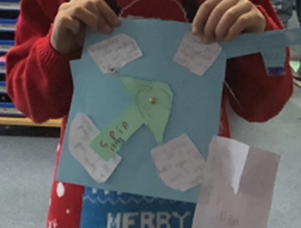Design Technology
Design Technology Intent Statement
Intent
Our intention is that “each child at Stanion will be enriched, motivated and challenged by a broad and balanced curriculum and will be valued for all their efforts and achievements.” Our approach to delivering the best for every member of our school community is based upon five key curriculum drivers. These are known as our Superpowers.





Our intention is to deliver Design & Technology through lessons that are meaningful and in context with children’s learning. We will provide opportunities to discover how design & technology has met the needs and wants of consumers in the past, how they have changed and why and how those needs are met today. Design & Technology provides opportunity to appreciate the diverse and changing needs and wants within society.
The curriculum intent is to revisit and build on skills and knowledge in Design & Technology within the areas of developing, planning & communication, working with tools, materials and components and making & evaluating processes & products. The design of our curriculum covers the breadth of learning set out in the National Curriculum which incorporates: food & cooking, textiles, mechanisms, materials and construction.
Within design & technology our intention is to draw on knowledge from other areas of learning including maths, English and computing and to provide a meaningful context in which to embed and apply cross curricular skills. Out Design and Technology projects are closely linked with our topics as stated on the long term plans. The Design & Technology curriculum intends to equip children the confidence, attitudes, skills and knowledge to become successful, reflective designers and makers of products.
Implementation
Design Technology is taught in every year group. You can find below our Long term plan for Year 1 to Year 6.As children engage with Design & Technology they develop skills and understanding in designing, making and evaluating and increase their technical skills and knowledge. Planning provides children the opportunities to explore, discover and create. Discussion and questioning amongst their peers and with the teacher, add depth and rigour to learning. Staff have access to a glossary of terms relevant to each year group and we ensure we use the correct technical language when teaching Design Technology. Expanding the language our children use is something we prioritise across our whole curriculum.
Design & Technology is creatively linked with subjects including history and art & design and supports the development of skills in reading, computing, maths and science. In Reception the children were inspired by a challenge to build a house with different materials after listening to the story of The Three Little Pigs, A Year One and Two project to design a textiles square for a Coat of Arms led to discussion of how symbols were used in place of writing long ago as much of the population couldn’t read. They then identified where symbols are used nowadays, for example the ‘M’ on McDonald's and care badges etc. Our Year 3 and 4 class recently designed mechanical posters about recycling.



Within our EYFS we foster the Characteristics for Learning (exploration, active learning, and critical thinking) and provide opportunities for Expressive Art and Design, and Understanding the World which equips our youngest children with the attitudes and experiences on which our curriculum for Design & Technology is built. The rich and varied projects and experiences our reception children take part in are detailed on the school long term plan.
Impact
The impact of our design & technology is measured through our monitoring cycle, which includes book looks where applicable, digital evidence on Tapestry, pupil voice and monitoring progress. Upon review, action points are discussed and communicated. We assess and track design & technology against skills and knowledge which are differentiated for each year group.
The intended impact of our Design & Technology curriculum is outlined below:
- Children can articulate and explain what Design & Technology is.
- Children demonstrate originality and willingness to take creative risks to produce innovative ideas. Children can carry out research, show initiative and ask questions to develop a detailed knowledge of a user’s needs.
- Children can act as responsible designers and makers, working ethically, using finite materials carefully and working safely. As a school we feel strongly that using resources thoughtfully and respectfully is a key way in which we can look after our planet.
- Children have a good knowledge of which tools, equipment and materials to use to make their products. They can manage risks to manufacture products safely and hygienically.
- Children have a passion for the subject and knowledge of, up-to-date technological innovations in materials, products and systems.
